After more than two years of development the Igalia WebKit team is proud to announce WebKitGTK+ 2.0.0.
But what’s so special about WebKitGTK+ 2.0?
The WebKit2GTK+ API is now the default one. This means that it’s now considered stable from the API/ABI backwards compatibility point of view, and that the old WebKit1 API is in maintenance mode and kind of deprecated. We will maintain both APIs, but we don’t plan to work on WebKi1 other than fixing bugs.
We encourage everybody to port their existing WebKitGTK+ applications to WebKit2, although we know the WebKit2 GTK+ API is not ready for all applications yet. We will work on adding new API during next release cycle, so let us know if you are missing some API that prevents you from porting your project.
Epiphany, the GNOME Web browser, has been successfully ported to WebKit2 and uses it by default since GNOME 3.8.
What are the benefits of the WebKit2 GTK+ API?
We have talked several times about the advantages of the multi-process architecture of WebKit2, robustness, responsiveness, security, etc. All of the details of the multi-process separation are mostly transparent for the API users, bringing all those benefits for free to any application using WebKit2 GTK+. We have developed the API on top of this multi-process architecture, but also with the experience of several years developing and maintaining the WebKit1 GTK+ API, learning from the mistakes made in the past and keeping the good ideas. As a result, the WebKit2 API is very similar to the WebKi1 in some parts and quite different in others. We started from scratch with the following goals:
- Simple and easy to use. Instead of porting the WebKit1 API to WebKit2, we decided to add new API on demand. We set some milestones based on porting real applications, adding new API required to port them. This also allowed us to design the API, not only thinking about what we want or need to expose, but also how the applications expect to use the API.
- Consistency. We have tried hard to be consistent with the names of the functions, signals and properties exposed by the API.
- Flexibility. When possible, the API allows to use your own implementation of some parts that can be adopted to different platforms. So, you can use your own file chooser, JavaScript dialogs, context menu, print dialog, etc.
- It works by default. For all those features where a custom implementation can be used, there’s a default implementation in WebKit that just works by default.
- Unit tests. We have enforced all new patches adding API to WebKit2 GTK+ to include also unit tests, so the whole API is covered by unit tests.
Let’s see the major changes and advantages of this new WebKi2 API.
WebKitWebView is a scrolling widget
For API users this means that WebKitWebView should not be added to a GtkScrolledWindow, the widget is scrollable by itself. Actually this is also the case of the WebKitWebView in WebKit1, but some hacks were introduced to allow the widget to be used inside a GtkScrolledWindow. This caused a lot of headaches due to the synchronization between the internal scrolling and the GTK+ scroll adjustments. So now the main scrollbars are also handled by the WebKitWebView which, among other things, fixed the problem of the double scrollbars in some web sites.
Embedded HTTP authentication dialog
The default implementation of the HTTP authentication embeds a dialog in the WebView instead of using a real GtkDialog. It’s also integrated with the keyring by default using libsecret.
GTK+ 2 plugins (flash)
Plugins also run in a different process that is built with GTK+ 2 to support the most popular plugins like flash that still use GTK+ 2.
Web Inspector
The Web Inspector works automatically in both docked and undocked states without requiring any API call.
It also has support for remote inspecting.
Accelerated compositing
Accelerated compositing is always enabled in WebKit2.
Future plans
During the next release cycle we’ll work on fixing bugs and completing the API, see our RoadMap for further details, but we’ll also explore some other areas not directly related the the API:
- Multiple web processes support
- Sandboxing
- Network Process
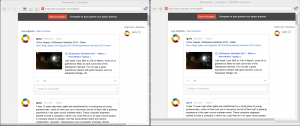
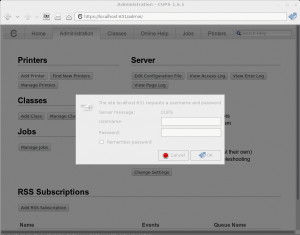
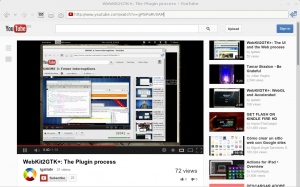
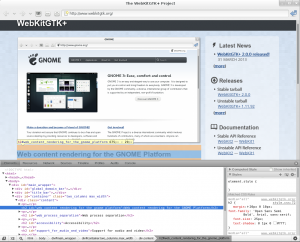
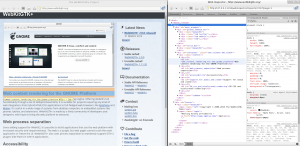
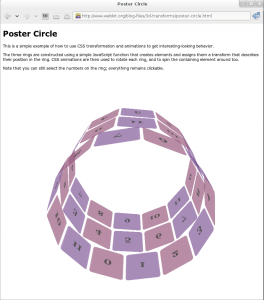
The toolbar and chrome on http://blogs.igalia.com/carlosgc/files/2013/04/http-auth-dialog.png looks like an old version of Epiphany. What is it?
@Alexandre Franke
It’s MiniBrowser, the WebKit2GTK+ demo browser, in all screenshots. See http://blogs.igalia.com/carlosgc/2011/11/04/webkit2-gtk-minibrowser-ported-to-gtk-api/
It would be useful if the Reference Manual had a “Porting from WebKit1” section like GTK+ and GLib did.
@Elliott
I agree, that was our idea, but we didn’t have time in the end, we were adding new API until the last minute 😛 Patches are, of course, welcome 🙂
Thanks for all the work!
As the new WebKitWebView is no longer embeddable inside a GtkScrolledWindow, is there a way to configure the native WebKit scroll bars?
I’ve developed a custom WebKitGTK+ browser for a large (single-point, so no gesture support) touchscreen installation and I’d love to port it to WebKit2, but I really need oversized scrollbars for it to be usable.
Thanks again!
Kudos !!
Looks like you guys did a great work 🙂 thanks!
Embedded HTTP authentication dialog… does that mean that I can switch to another tab while an authentication dialog is open in the current?
I often find myself unable to remember the password and / or username so I use another tab to find ie in a wiki or webmail.
Yes